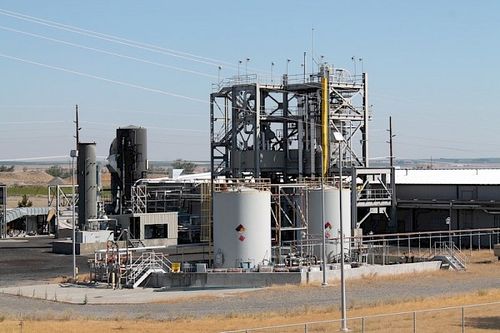Starfire Energy, a Denver-based green ammonia producer, is wrapping up a series B capital raise and laying the groundwork for a series C later this year, CEO Joe Beach said in an interview.
The company completed a $6.5m series A in 2021 and finished a $24m series B last year. Investors include Samsung Ventures, AP Ventures, Çalık Enerji, Chevron Technology Ventures, Fund for Sustainability and Energy, IHI Corporation, Mitsubishi Heavy Industries, Osaka Gas USA, Pavilion Capital and the Rockies Venture Club.
Beach declined to state a target figure for the upcoming raise. The firm has not used a financial advisor to date.
Starfire is currently deliberating on locations for its first production facility to come online in 2026, Beach said. Colorado is a primary contender due to ammonia demand, while the Great Plains offer abundant wind energy.
The firm’s strategy is to use renewable energy and surplus nuclear power from utilities to create ammonia from hydrogen with no storage component, eliminating the problems associated with hydrogen storage and transportation.
Targeted offtake industries include agriculture, maritime shipping and peaking power fuel consumption.
“The demand is global,” Beach said, stating that he expects about 150 leads to convert to MOUs. “We get inbound interest every week.”
For future capital raising, Beach said the company could take on purely financial investors, as it already has a long list of strategic investors.
“The expectation is we will wind up with manufacturing plants around the world,” Beach said.
The “new petroleum”
Many hydrogen production projects have been announced worldwide in the last year.
Beach said he expects many of those to transition into ammonia production projects, as ammonia is much easier to export.
Now, Starfire is working on developing its ammonia cracking technology, which converts ammonia into an ammonia/hydrogen blend at the point of use for chemical processes. The final product form in that process is 70% ammonia, 22.5% hydrogen and 7.5% nitrogen – all free of emissions.
The company is using proceeds of its series B capital raise to develop its Rapid Ramp and Prometheus Fire systems. Rapid Ramp uses a modular system design for the production of green ammonia using air, water, and renewable energy as the sole inputs. Prometheus Fire is an advanced cracking system that converts ammonia into hydrogen, operating at lower temperatures than other crackers and creating cost-effective ammonia-hydrogen blends that can replace natural gas.
The advantage to using this technology is that it makes the export of a hydrogen product financially feasible, Beach said.
“You should see ammonia becoming the new petroleum,” he said of the global industry. Ammonia can be deployed internationally like oil and provide the dependability of coal.
Eventually Starfire will undergo a financial exit, Beach said. Likely that will mean an acquisition, but an IPO is also on the table.









